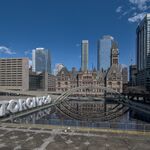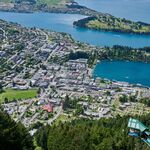Why wouldn't we push for suburban communities? They allow us to build a lot of units quickly, something that can't happen in a redevelopment. They're often denser than what can be built as a redevelopment, too.
For me, it isn't a "we should build up not out".
Despite rhetoric often put forward by the suburban development lobbyists, I don't think the city's position has ever been anti-suburban growth in any meaningful way.
"Both up and out" has been in vogue for at least 20 years. Calgary has never entertained any sense of "hard" boundary like a greenbelt to curtail suburban growth, nor has ever materially favoured redevelopment over suburban growth through restricting the suburban side. If we really didn't want suburban communities we'd have killed them like other cities did with a far more draconian approach decades ago (likely triggering the leap-frogging to surrounding municipalities). Never be fooled by anti-suburban claims in Calgary, the proof is in the physical form of the city - obviously we didn't limit suburban growth here.
What's changed in the past few decades is the more sophisticated approach to trying to land a more balanced cost-sharing approach to suburban growth. This is both an input and output of becoming a larger city: at greater scales and distances suburban growth infrastructure starts to not scale well, land gets more expensive. Costs keep increasing and the scale of new development hits more threshold problems that trigger yet more costs. The older models that were more generous (i.e. more public subsidy of growth infrastructure) become unsustainable, necessitating change. All this happened in the last 20 years.
At the same time, there's far more recognition on the barriers to redevelopment and much more effective approaches to remove these barriers. The citywide rezoning efforts, incrementally improving infill products, and the many big and small rule changes to help infill growth are part of this. The scale and pace of redevelopment is evidence that this too is working.
The result, IMO, is that Calgary has found a reasonable balance between infill and greenfield development, given our size and political opportunities/constraints. Nothing is perfect and there's plenty of pain points, but overall it's a positive balance. Things will keep changing as the city does - no system is static.
Next for us is being a bigger metro-region, where the increasing distance and commute times thanks to continued suburban growth really start boosting the business case for more large-scale redevelopment opportunities at places like Chinook, North Hill, University etc. Secondary centres within the city will start forming with a critical mass of interesting stuff going on (one day, the Beltline may not be the only place with a real nightlife!) Some of that has started already, but will continue as the size of the overall city increases.







